William Hemsworth's Blog, page 83
June 10, 2021
Beelzebul Or Jesus? The Choice Is Yours
Beelzebul And Casting Of DemonsNow he was casting out a demon that was mute; when the demon had gone out, the one who had been mute spoke, and the crowds were amazed. 15 But some of them said, “He casts out demons by Beelzebul, the ruler of the demons.” 16 Others, to test him, kept demanding from him a sign from heaven. 17 But he knew what they were thinking and said to them, “Every kingdom divided against itself becomes a desert, and house falls on house. 18 If Satan also is divided against himself, how will his kingdom stand? —for you say that I cast out the demons by Beelzebul. 19 Now if I cast out the demons by Beelzebul, by whom do your exorcists[a] cast them out? Therefore they will be your judges. 20 But if it is by the finger of God that I cast out the demons, then the kingdom of God has come to you. 21 When a strong man, fully armed, guards his castle, his property is safe. 22 But when one stronger than he attacks him and overpowers him, he takes away his armor in which he trusted and divides his plunder. 23 Whoever is not with me is against me, and whoever does not gather with me scatters.-Luke 11:14-23 NRSV
The above Gospel reading is very interesting. The Pharisees have an explanation for the miracles that Jesus is doing. They say he is doing them with the power of Beelzebul.
Beelzebul was an ancient Philistine deity, and was considered a major demon during the time of Jesus. Essentially the Pharisees were saying that Jesus was casting out demons with the power of demons. The response that Jesus gives makes it clear from whom his power comes from.
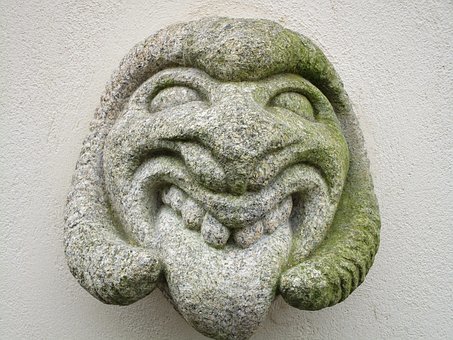
It cannot possibly come from demons because they would just be working against themselves. A kingdom divided amongst itself will not last.
Jesus Has the PowerThe power that Jesus has to cast out demons and heal is not something that the demons are able to do. Likewise we are not able to reform and save ourselves from sin. We can try and and try, but if we are doing it apart from Jesus we will ultimately fail.
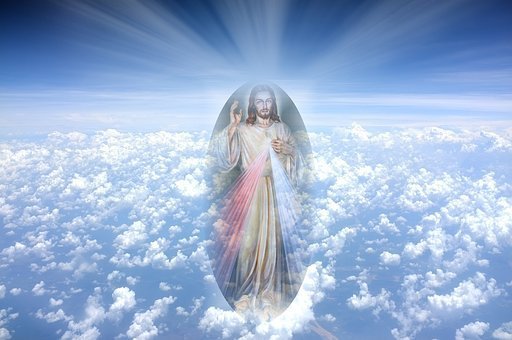
We are unable to overcome evil by our own efforts. The Catechism in paragraph 385 has this to say,
Will It Be Jesus Or Beelzebul?“God is infinitely good and all his works are good. Yet no one can escape the experience of suffering or the evils in nature which seem to be linked to the limitations proper to creatures: and above all to the question of moral evil. Where does evil come from? “I sought whence evil comes and there was no solution”, said St. Augustine, and his own painful quest would only be resolved by his conversion to the living God. For “the mystery of lawlessness” is clarified only in the light of the “mystery of our religion”. The revelation of divine love in Christ manifested at the same time the extent of evil and the superabundance of grace. We must therefore approach the question of the origin of evil by fixing the eyes of our faith on him who alone is its conqueror.“
The evil one wants us to try to do it on our own. That way we are easy picking for him when we fall in despair. We do this without knowing it sometimes. Are we seeking to live a life of holiness and asking Jesus to daily lead us along the way?
To not grow in holiness and daily choosing not to follow Christ we essentially are giving the power to Beelzebul. Our souls cannot go both ways. It is one or the other. Choose Jesus.
Saint QuotesYou cannot be half a saint; you must be a whole saint or no saint at all.- St. Therese of Lisieux
Love God, serve God; everything is in that.- St. Clare of Assisi
The post Beelzebul Or Jesus? The Choice Is Yours appeared first on William Hemsworth.
June 8, 2021
Hearing God’s Voice And Following His Will
It seems that everyday I get at least one email from someone I have never met asking a simple, and yet complex question. How do I know what God’s will for me is? Another question that goes along with it is very common in these messages. When I pray how do I know It Is God’s voice that I’m hearing?
To answer this question I sat down to talk to someone who has a lot of experience in this. In fact, she has a great story about how she heard God’s voice and decided to follow his will. She left her executive career to go into full time ministry.
 Hearing God’s Voice With Kendra Von Esh
Hearing God’s Voice With Kendra Von EshCatholic author, speaker, and faith coach Kendra Von Esh joins me to discuss something crucial to all of us. Hearing God’s voice and understanding his will for our lives. We both candidly discuss our personal stories of how we heard his voice for our lives, and ways you can do the same.
Visit her website for more information and to bring Kendra to your event. The website is www.kendravonesh.com.
Hearing God’s Voice And Living In The SpiritBelow is a recent interview with Kendra about living in the Spirit.
About KendraKendra Von Esh is a Catholic Speaker, Author, and Faith Leader from Chicago, Illinois.
Kendra was Confirmed Catholic but never practiced because she didn’t truly understand or believe in the faith. As she made her way to the C-Suite in Corporate America, she indulged in all this life had to offer for decades. She was too busy for God and truthfully, she didn’t need Him and certainly wasn’t looking for Him.
Through prayer for a loved one, God inched His way back into Kendra’s life and completely transformed her in so many ways.
Five years after returning to Catholicism, Kendra left her Corporate Executive career to follow her passion and share her new ministry. She inspires business leaders, parishes, and universities with her dynamic speaking, engaging workshops and in-person events on how participants can enrich their lives through faith and prayer.
When she isn’t speaking with God (or inspiring others to do the same) or filming video blogs and online courses, Kendra enjoys spending time on the lake, golfing with her husband Jeff, and grilling keto-friendly meals with their two boys.
The post Hearing God’s Voice And Following His Will appeared first on William Hemsworth.
June 7, 2021
Fear Of The Lord: A Hebrew Word Study In Proverbs
The phrase “fear of the Lord” is rich and the text has much meaning. For purposes of this exercise the study is limited to the first two chapters of the book of Proverbs. The usage of this phrase occurs in Proverbs 1:7, 1:29, and 2:5.
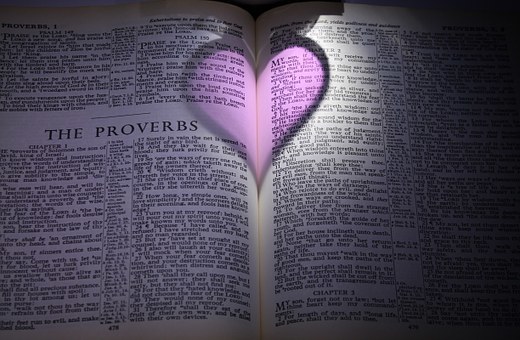 Fear of the Lord
Fear of the LordThe first word in the phrase “fear” is the Hebrew word yir’ah, or יִרְאָה. This term is used forty-five times in the Old Testament. Its root word is the adjective yare’, or יָרֵא, which is used sixty-four times in the Hebrew Bible.
The second word in in the phrase, which makes up “of the Lord” is the Hebrew word Yĕhovah, which in Hebrew is יְ֭הוָה. As one can imagine this word is used several times. In fact, it is used an astounding 6,519 times. Though it is the name of the Lord, its root word is hayah, or הָיָה in Hebrew.
The first word yir’ah, or יִרְאָה, is used three times in the first two chapters of Proverbs in 1:7, 1:29, and 2:5. The second word Yĕhovah, or יְ֭הוָה in Hebrew, is used a total of four times in the first two chapter Proverbs in 1:7, 1:29, 2:5, and 2:6. The English word used for the word yir’ah are fear, exceedingly, dreadful, fearfulness, or reverence. Many sources available, such as Blue Letter Bible and Bible Gateway agree, but Strong’s also added reverence. When one speaks of the fear of the Lord it is in reverence, so it was good to see it listed.
The second word Yĕhovah, or יְ֭הוָה is translated as Lord, God, and Jehovah. It is the proper known for the God of Israel, and the translations appear to be universally agreed upon.
Context CluesThe context of the passages is crucial to word placement in the passages mentioned. The first two chapters of Proverbs deal with the call of wisdom and the treasure of wisdom. The fear of the Lord in the beginning of understanding (1:7), those who hate knowledge do not have respect for the Lord (1:29), and those who fear the Lord are illuminated with knowledge (2:5).
The first two chapters of Proverbs teach us a valuable lesson. No matter hard one may try, an understanding of life and of God begins with a deep reverence for the creator. This will lead to wisdom which is the humility to understand that God is God and we are not.
God grants us understanding and wisdom, but if we become prideful and elevate ourselves to a place we should not be then we will be humbled. We will be humbled because we no longer have the fear of the Lord. The fear of the Lord is the foundation of a holy life.
Bibliography[1]. Wilhelm Gesenius and Samuel Prideaux Tregelles. Gesenius’ Hebrew and Chaldee Lexicon to the Old Testament Scriptures, Gesenius Hebrew and Chaldee Lexicon to the Old Testament Scriptures (Bellingham, WA: Logos Bible Software, 2003), 364.
The post Fear Of The Lord: A Hebrew Word Study In Proverbs appeared first on William Hemsworth.
June 4, 2021
3 Musts For Evangelization
Evangelization is something that Jesus tells us all to do. Patrick Sullivan recently joined me to give us three tips to evangelize those around us. These tips are not only for our neighbor, but especially for our families. These tips will strengthen your resolve to share and live your faith in a way you never thought possible.
Evangelization TipsRecognize who you are. Know that you, as a Christian, are an evangelist. It’s part of the package after baptism and Confirmation. Recognize your circle of grace Circle of grace. People in front of you that are put in front of you so you can “turn their heart” (to God). Stop looking outside. Look at the faces of people you meet. Hone in and focus on that individual. Speak to them where they are, not necessarily about your topic, where you are, or how you want to talk about Christ. Speak at their level. Use the right strategies. Make it about the data and make it relevant to the person. How the faith will be received, adapting as necessary.
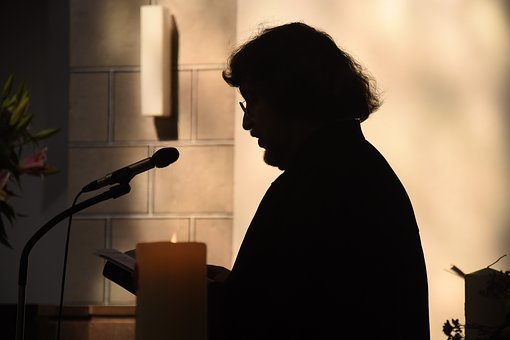 About Patrick
About PatrickPatrick Sullivan is a Catholic Speaker and the President of Evango. Patrick’s degrees in Literature, Education, and his Masters of Divinity from St. Augustine’s Seminary in Toronto have all played a role in enriching his own faith life, and have inspired him to share his insights and love of the Lord with others. Patrick is the author of the popular title, “Dare to Be an Evangelist,” as well as the recently published Marian book, “War Against The Woman.”
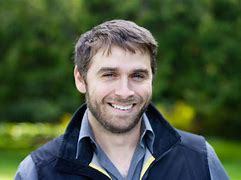
Patrick travels internationally to speak at Catholic events, parenting conferences, and to lead retreats and parish renewal missions. He has appeared as a guest on numerous media platforms, including EWTN, Shalom World Tv, Salt + Light Television, and the Mary Goulet Show. His new groundbreaking Catholic Parenting program, “Me & My House” has been streamed on Shalom World Tv, and is available on Formed. Patrick draws on his rich educational experience as well as his work in Catholic catechesis and evangelization to inspire the faithful in all walks of life to know, to love, and to live their Catholic faith. Patrick lives in beautiful Barry’s Bay, Ontario with his loving wife, Kyla, and their nine children
About EvangoEvango is a Catholic Media Organization that seeks to build a culture of Catholic evangelization and missionary discipleship. We utilize truth, beauty, and goodness as languages of evangelization and in this way, seek to inspire the faithful in all walks of life to know, love, and live their Catholic faith. learn more at www.evango.net
 Evangelization Interview With Patrick Sullivan
Evangelization Interview With Patrick SullivanListen to the audio version here.
The post 3 Musts For Evangelization appeared first on William Hemsworth.
June 3, 2021
Take Time To Study The Genealogy Of Jesus
The Genealogy Of Jesus Is Important
An account of the genealogy[a] of Jesus the Messiah,[b] the son of David, the son of Abraham.2 Abraham was the father of Isaac, and Isaac the father of Jacob, and Jacob the father of Judah and his brothers, 3 and Judah the father of Perez and Zerah by Tamar, and Perez the father of Hezron, and Hezron the father of Aram, 4 and Aram the father of Aminadab, and Aminadab the father of Nahshon, and Nahshon the father of Salmon, 5 and Salmon the father of Boaz by Rahab, and Boaz the father of Obed by Ruth, and Obed the father of Jesse, 6 and Jesse the father of King David.
And David was the father of Solomon by the wife of Uriah, 7 and Solomon the father of Rehoboam, and Rehoboam the father of Abijah, and Abijah the father of Asaph,[c] 8 and Asaph[d] the father of Jehoshaphat, and Jehoshaphat the father of Joram, and Joram the father of Uzziah, 9 and Uzziah the father of Jotham, and Jotham the father of Ahaz, and Ahaz the father of Hezekiah, 10 and Hezekiah the father of Manasseh, and Manasseh the father of Amos,[e] and Amos[f] the father of Josiah, 11 and Josiah the father of Jechoniah and his brothers, at the time of the deportation to Babylon.
12 And after the deportation to Babylon: Jechoniah was the father of Salathiel, and Salathiel the father of Zerubbabel, 13 and Zerubbabel the father of Abiud, and Abiud the father of Eliakim, and Eliakim the father of Azor, 14 and Azor the father of Zadok, and Zadok the father of Achim, and Achim the father of Eliud, 15 and Eliud the father of Eleazar, and Eleazar the father of Matthan, and Matthan the father of Jacob, 16 and Jacob the father of Joseph the husband of Mary, of whom Jesus was born, who is called the Messiah.[g]
17 So all the generations from Abraham to David are fourteen generations; and from David to the deportation to Babylon, fourteen generations; and from the deportation to Babylon to the Messiah,[h] fourteen generations.-Matthew 1:1-17 NRSV
Yes, I really did just post the first seventeen verses of Matthew’s Gospel.
This is the time of year when most of us read or hear the genealogy of the Lord Jesus Christ. It is full of words that are hard to pronounce, and at its surface seems like a tedious task with little meaning. Nothing could be further from the truth.
There is so much truth and through it we get a breakdown of salvation history. Through it we see that our Lord did not come just for Israel, but for the gentile as well. Praise God!
 For Jew And Gentile
For Jew And GentileMatthew is writing to a Jewish audience, and he puts two huge names before all the others, that of David and Abraham. Maybe it was to get the attention of his readers, but the next sixteen verses are very important and often overlooked (Which is why I included them).
The genealogy contains a murderer (David), a prostitute (Rahab), and shows the fulfillment of a promise that God made to Abraham and David. From this line that contains various sins and people that were looked down upon came the savior of the world. We often miss that when the passage is read. Take some time to read nd meditate on the whole genealogy of Christ. In it you will find rich treasures that will give a whole new meaning to the Christmas story.
 A Word Of Encouragement
A Word Of EncouragementI want to encourage you to not simply skip over the genealogy at the beginning of Matthew’s Gospel. Look into it, study it, ponder it, and you will see how amazing it is that Christ the King came from a line that included grave sinners. It adds a whole new dimension to salvation history.
When I read through all the names in the list delve deeper. Do a study of who they are and how they lived. This helps bring the biblical characters to life and see them more than just words on a page. Seeing their responses and choices brings a whole new element and understanding to the incarnation.
If you are interested in doing a deeper study about those mentioned there are many resources available to do so. Catholic Culture has a free Bible dictionary where you can simply type in the name and it will bring up a short explanation. This is a great way to start. If you want to go eve deeper then that then head over to newadvent.org. The link provided goes to the Catholic Encyclopedia. Enter the name you are researching in the search engine on the top of the page and you will be treated with Bible passages, encyclicals, and works of the church fathers that discuss whom you are searching for. Let’s learn more about our faith. A good way of doing that is to learn more about scripture and those in the genealogy of Christ.
Saint QuotesIgnorance of Scripture is ignorance of Christ.-St. Jerome
Christ be with me, Christ within me, Christ behind me, Christ before me, Christ beside me, Christ to win me, Christ to comfort me and restore me, Christ beneath me, Christ above me, Christ in quiet, Christ in danger, Christ in hearts of all that love me, Christ in mouth of friend and stranger.-St. Patrick
Christ said, “I am the Truth”; he did not say “I am the custom.”-St. Toribio
You learn to speak by speaking, to study by studying, to run by running, to work by working, and just so, you learn to love by loving. All those who think to learn in any other way deceive themselves.-St. Francis de Sales
The post Take Time To Study The Genealogy Of Jesus appeared first on William Hemsworth.
June 2, 2021
The New Testament Is Reliable
When it comes to a discussion about sacred scripture the word “accuracy” will definitely come up. Whether it is in regards to passages in the Old Testament or the New Testament, but what is the basis for such questions? Is it an honest attempt to discern the truth or is one’s mind already made up?
This is a question that I myself had before I became a Christian, and it is the same that some of my best friends have now. How can an author or authors could possibly “quote” what Jesus, Peter, Stephen or any other person said when the author was not there and there does not appear to be any written documents that have the quotes?
Questions On New Testament DatingThis question is often asked because of the dates that the New Testament books were written in. Jesus lived between 4 B.C. and 33 A.D. and the first accounts of his life, the gospels, were not written until the 60’s. That is the Gospel we know today as the Gospel of Mark. David Black states
“The church historian Eusebius quotes the early Christian leader Papias as saying ‘This also the presbyter said: Mark, having become the interpreter of Peter, wrote down accurately, though not indeed in order, whatsoever he remembered of the things said or done by Christ (Black, page 140).”
To understand the significance of this statement we must look again to the life of Saint Peter. Saint Peter was a passionate man who was of great faith one moment and a doubter the next. He was a man that told Christ that he would never leave nor deny him, but we find him denying Christ just before the crucifixion.
New Testament Writers Revealed Intimate DetailIn Mark 14:54 we read “Peter followed him at a distance into the high priest’s courtyard and was seated with the guards, warming himself with fire.” This is a detail that only Peter would know and he transmitted it to Mark who wrote it down.
The denials in the courtyard came next, and in Mark 15:72 at the end of the verse “He broke down and he wept.” These are intimate details of someone who lived through the experience of denying his Lord three times.
The Events Changed LivesOne may say that the personal details of Peter prove nothing about how Jesus could be accurately quoted so long after He resurrected. To this an experience of the individual could be brought up. We all have someone who is, or was, extremely close to us.
This person taught us something, was an influential figure in our lives. The fact that we never wrote their words down does not diminish them or void them when we recall them several years later. The same goes for the Apostles and evangelists of the New Testament.
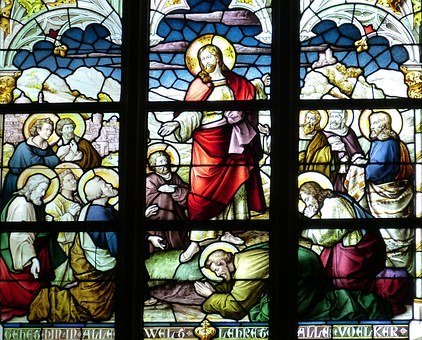 People Died For What They Saw
People Died For What They SawThese individuals saw Christ walking, crying, healing, walking on water, and being compassionate to the unclean of the time. They saw him die, and though they did not personally see the resurrection they encountered the resurrected Christ later on. Imagine what kind of impact that would have on an individual?
Having seen, heard, and lived that how could one possibly ever forget the words of Christ? I would dare to say that it is impossible because they, with the exception of John, would die for those words themselves. One is not willing to die for something that is not true, or even partially true.
The Apostles took Christ’s command of making disciples very seriously. They would be in violation if they were writing or teaching anything that was not accurate.
More Documentation Than Any Other RecordIn addition to the question above another comes up in regard to accuracy. How can we know that the New Testament is accurate when we do not have the original manuscripts? Josh McDowell answers this question by saying,
“There are now more than 5,686 know Greek manuscripts of the New Testament. Add over 10,000 Latin Vulgate and at least 9,300 early versions and we close to 25,000 manuscript copies of the New Testament in existence today. No other document of antiquity approaches this number. In comparison, Homer’s Iliad is second, with 643 copies that have survived (McDowell, page 60).”
All these copies they are basically the same with the exception of a word misspelled or misplaced here or there. These small errors do not change the message or doctrine of the text.
Raymond Brown writes,
“one fact is indisputable. Joined as the New Testament these twenty seven books have been the most important instrument in bringing untold millions of people from different times and places into contact with Jesus of Nazareth and the first believers who proclaimed him (Brown, page 15).”
The first generation of Christians contained more than the apostles. 1 Corinthians 15:6 states “After that, he appeared to more than five hundred at once, most of whom are still living, though some have fallen asleep.”
Not A New IssueThe question of the accuracy of the New Testament was around in the time of Saint Paul. In this passage he is basically telling the Corinthians to go ask those that witnessed the resurrection if you do not believe it.
Paul had absolute confidence in what he preached, and we have confidence that the New Testament is accurate today. The only reason that there were no earlier New Testament writings is because it was not commanded. Jesus did not write nor did He command his apostles to write.
He commanded them to preach and that they did. Brown states “He is never recorded as setting down even a word in his lifetime or telling any of his disciples to write. Accordingly the proclamation of the kingdom of God made present in Jesus did not depend on writing (Brown, page 5).”
The first Christians believed that the end times were at hand and did not feel the need to write. It was not until they started dying that they felt the need to write to preserve the teachings.
We Can Be ConfidentWhat we have in the New Testament comes from those who knew Jesus on a personal level, or they were close companions of them. They all came from the first generation of Christians. They were people that lived in the same times as our Lord. To call anyone but Caesar Lord was suicide, yet they did it.
We can have faith that the Testament in accurate because of the amount of ancient manuscripts we have, ancient historians that speak of it, and history has been unable to disprove it. Karl Keating has a wonderful quote about Christianity. He said “Christianity is the easiest religion to disprove, just show us the bones.”
Works CitedBrown, Raymond, An Introduction to the New Testament. New York: Doubleday, 1997
Lea, Thomas D., and David A. Black. The New Testament: Its Background and Message. 2d ed. Nashville, TN: Broadman and Holman Publishers, 2003
McDowell, Josh. Evidence for Christianity. Nashville, TN: Thomas Nelson, 2006
The post The New Testament Is Reliable appeared first on William Hemsworth.
June 1, 2021
Transubstantiation: Defending The Eucharist
Transubstantiation is something that is often misunderstood by our Protestant friends. To be honest, there are some Catholics who need a refresher as well. William Albrecht recently joined me to discuss all things Transubstantiation. We discuss examples from scripture, the church fathers, and councils. He gives us a lot of great information to better understand and defend this doctrine.
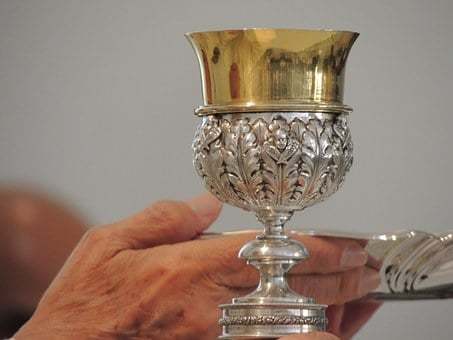
William wrote a fantastic book about this topic with Father Christian Kappes. Check out the book at on Amazon. Be sure to follow all of William’s amazing work at www.patristicpillars.com as well as on the Youtube channels Reason and Theology, William Albrecht, and Apocrypha Apocalypse.
Defending Transubstantiation: The InterviewAbout William AlbrechtWilliam Albrecht is a Catholic Christian with a B.A. in Theological Studies. He is an international speaker and debater, having participated in over 70 moderated debates. William is co-host for Reason & Theology, as well as having guest appeared on EWTN, Virgin Most Powerful Radio, and many other networks.
William runs a website dedicated to the Early Church Fathers that includes unique translations, articles, commentaries, and debates on the Fathers of the Church. You can find out more about him on his website: http://www.PatristicPillars.com
The post Transubstantiation: Defending The Eucharist appeared first on William Hemsworth.
May 31, 2021
Back To Church Basics: The Four Marks
The study of Ecclesiology is interesting in that it raises a dichotomy that ripples through the very fabric of Christianity. Ecclesiology is the branch of theology that deals with the study of the Church. What is the Church? What are its functions? Is it visible, invisible, or both? Some, if not most of these, are contained in the four marks of the church.
These are questions lead to great discussion, but the root of Ecclesiology is the Greek word ekklesia. This word translates into English as “church”.
The Church proclaims the Gospel of Christ, and spreads his message across the world to all peoples. The task of the Church is to be a beacon of hope, and teach all who enter through her doors the ways of salvation.
The Church finds its foundation from Christ in Matthew 16:18 when our savior says, “And I say unto thee: That thou art Peter; and upon this rock I will build my church, and the gates of hell shall not prevail against it” (Douay-Rheims). Saint Paul calls the Church the bulwark and pillar of truth in 1 Timothy 3:15.
The Church is categorized by the four marks of being One, Holy, Catholic, and Apostolic.
THE CHURCH IS ONEThe first mark of the Church is that it is one. One is more than a number, but conveys unity. This unity comes from her source which is the eternal Godhead itself. This is seen clearly in the Catechism of the Catholic Church which states, “the highest exemplar and source of this mystery is the unity, in the Trinity of Persons, of one God, the Father and the Son in the Holy Spirit”.
This does not mean that disagreements do not exist. It does mean that doctrinally we have a united front.
Within the Church there are many gifts and charisms that people have. Unity is a beautiful thing. One person may be good at administration, another in teaching, and yet another may speak in tongues.
In this way the Church has a valuable lesson for society. Every gift that a person possesses is useful in the building up of the Church. This is another way that the Church is one.
The individuals of the Church come together to build each other up and proclaim the faith that was proclaimed by the apostles. The Vatican II document titled Lumen Gentium states in paragraph four, “He leads the church in all truth, and he makes it one fellowship and ministry, instructing and directing it through a diversity of gifts both hierarchical and charismatic, and He adorns it with His fruits”.
 THE CHURCH IS HOLY
THE CHURCH IS HOLYThe second mark of the Church is that it is holy. The Church is holy based on Jesus Christ who is its founder. This can be seen in the salutation of Saint Paul to the Corinthians where he writes, “to those who are sanctified in Christ Jesus, called to be saints” (1 Corinthians, 1:2, RSV).
The Church is sanctified, or made holy, by its call and mission. It is made up of sinners, who by the grace of God, carry out the great commission of teaching and baptizing.
The Church is the bride of Christ, and just as a husband and wife are one flesh, so is the Church holy because of the bridegroom. This is seen in paragraph 824 of the catechism which states, “United with Christ, the Church is sanctified by him; through him and with him she becomes sanctifying”.
The Church acknowledges that the people within are not perfect, but need God’s saving grace. Like a loving mother, the Church holds those souls closely and provides them the means of which to be saved. The Church, through its liturgy and sacraments, provides the means of grace which Christ instituted fully and perfectly.
THE CHURCH IS CATHOLICThe third mark of the Church is that it is catholic, but this means so much more than the name of the Roman Catholic Church. The word first came into use by St. Ignatius of Antioch in the second century.
Saint Ignatius writes in his epistle to the Smyrneans, “Wherever the bishop shall appear, there let the multitude [of the people] also be; even as, wherever Jesus Christ is, there is the Catholic Church” (Alexander Roberts 701).
In using this word, St. Ignatius tells his readers that the Church is universal. It is a Church not just for the Jews or gentiles, but for all people.
It is for the rich, the poor, slave, and free because we are all children of God. The Church teaches message of Christ to everyone. The Church is also Catholic because the full deposit of faith, which consist of sacred scripture and sacred tradition, were entrusted to her. Through these deposits she can fulfill the final command of Christ laid out in Matthew 28:19-20.
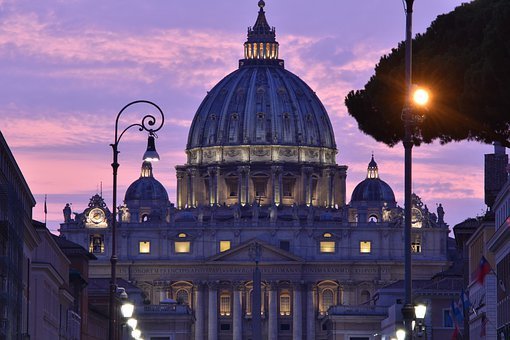
How does this relate to other ecclesial communities? The Church is also Catholic because of its structure of bishops, priests, and deacons. Of course, the pope, the bishop of Rome, has authority.
This is a big hurdle for some Protestants. However, this does not mean that they are not Christians and are not part of the universal Church. They are in an imperfect communion with the Church that was established by Christ.
THE CHURCH IS APOSTOLICThe Church is apostolic because the apostles were given the authority from Christ to establish it. The catechism in Paragraph 857 states,
“the Church was built on the foundation of the Apostles, with the help of the Holy Spirit, the Church keeps and hands on the teaching, she continues to be taught, sanctified, and guided by Christ through their successors”.
The teaching office of the church consists of bishops in union with the Pope. This group of men have the great honor of carrying on the teaching of the apostles. This is the teaching office of the Magisterium.
Contrary to what some think, scripture is not self-interpreting and interpretation can change based on one’s presupposition. The Church is apostolic because the teaching office of the Church, the Magisterium, is given the divine task to interpret scripture.
The apostolicity of the Church is seen clearly in sacred scripture. Acts 1:24-25 which states,
“And they prayed and said, ‘Lord, you know the hearts of all men, show which one of these two you have chosen to take the place in this ministry and apostleship from which Judas turned aside, to go to his own place” (New American Bible).
We see the apostles replacing Judas and this succession continues today. History shows that the apostles appointed men who would take over their ministry.
MARIAN AND PETRINE INFLUENCEFrom the four marks, we see the Church’s mission, structure, and its establishment in scripture and tradition. In addition to the four marks, the Church has Marian and Petrine charisms.
In the Petrine charism, we see the church linked with the apostles. Pope Francis is Saint Peter’s successor, and thus the Church today has the historical link to the apostles. Each bishop can trace their ecclesial heritage to one of the twelve apostles, and history shows that there was an early understanding of papal primacy.
The Marian charism is no doubt a very significant area of disagreement with other Christian churches. As Mary is mother to Christ, the Church is a mother to the faithful.
Regarding Mary and the Church, the catechism states, “The faithful still strive to conquer sin and increase in holiness. And so, they turn their eyes to Mary: In her the Church is already all-holy” (Catechism 829). There are many sources in sacred scripture that allude to the Marian influence.
John 19:26-27 states,
“When Jesus saw his mother and the disciple whom he loved standing beside her, he said to his mother, ‘Woman, here is your son.’ Then he said to the disciple, ‘Here is your mother.’ And from that hour the disciple took her into his own home” (NRSV).
Our Lord was gave his mother to John, and in the same way he gives us Mary to be our spiritual mother. By teaching and administering the sacraments the Church acts in this motherly role for her children.
CONCLUSIONIn Ecclesiology, we study the Church and its doctrines. The four marks of the church make up the theological foundation that differentiate it from other religions.
In John 17 Christ prayed for unity, and in Christianity this is hardly the case. We have the promise of Christ that the powers of evil will not overcome what he has established. We should take great joy and courage that we participate with the Church in its mission to the world.
The Catholic Church can trace its lineage and doctrine to the very foundations of Christendom. Therefore the Church is not only the body of believers as Protestants believe. It is also a visible entity in which the faithful can go for comfort and guidance.
WORKS CITEDRoberts, Alexander, James Donaldson, and A. Cleveland Coxe, eds. The Apostolic Fathers with Justin Martyr and Irenaeus. Vol. 1. Buffalo, NY: Christian Literature Company, 1885. Print. The Ante-Nicene Fathers.
The post Back To Church Basics: The Four Marks appeared first on William Hemsworth.
May 30, 2021
Reflecting On The Trinity Can Help Us Grow In Holiness
Many say that the Trinity is complex and is some regard they are right. The concept is one that baffles the mind, and some find it unbelievable. The fact that our finite minds are not able to fully grasp it is intriguing. It makes sense really because if we can fully understand the nature of God then there is a problem.
Trinity And RelationPerhaps we have made a god in our own image at that point. One we can fully understand, but in the end is false and has zero ability to save. St. Augustine said that if we understand him then he is not God. St. Thomas Aquinas says that the Trinity is one and that the Father is so because of relation to the Son.

They are still one essence though they are two persons. The same can be said about the Holy Spirit. The Holy Spirit is spirated from the Father and proceeds from the Father and the Son. Spiration is to have a relation to the principle.
The Father is the first principle of all creation, the Son is begotten, and the Spirit proceeds and is spirated. Spiration is a term of temporality and eternality. Thus, the Holy Spirit is eternal with no beginning or end. This is the same principle when looking at Christ as the only begotten son of God.
Christ was begotten in the temporal sense at the incarnation. In an eternal sense he is begotten because he is the love of God. He is the Word and has always existed. The Greek term for begotten is monogenes and denotes his divinity and eternality. He is the Son of God in a very different sense than a man is a father to a son. Understanding these, not only explains the Trinity in a deeper way, but shows us divine simplicity.
Trinity Is LoveThe work of the Trinity is ultimately a work of love. Look around at creation and you can see the beauty and majesty of the Father’s work. Something as simple as a beautiful sunset can make a lasting impression on us. In the Son we see the person of our redemption. It is awe inspiring and hard to fathom.
The second person of the Trinity, the Son of God, became man. He not only became man, but was born into humble beginnings, was tempted just like us, felt the same emotions as we do, did nothing wrong, and died on the cross for our sins. In his resurrection we see the ultimate representation of his divinity, because without the resurrection the cross means nothing.
The Holy Spirit proceeds from the Father and the Son for our help and sanctification. The three work together for one cause. That is the salvation of mankind. This entity that we cannot fully fathom loves us so much.
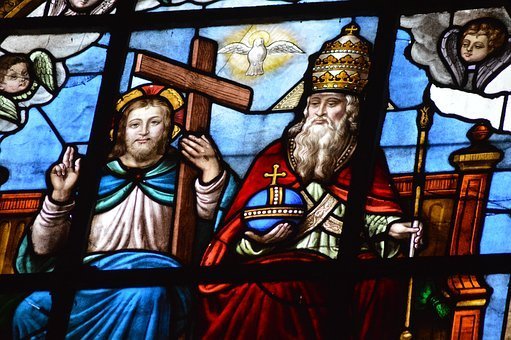 Seek to Build Faith
Seek to Build FaithIf the Trinity is not able to be fully known is it worth trying to understand? We would not be doing our duty as Christians if we did not try to do so. We do not need minds like Augustine or Aquinas to do this. Some of us may be called to do such things, but there are many things we can do.
We can read scripture, pray, and read the work of the great minds in the history of the church. We can also fully surrender ourselves to the Trinity and allow the Trinity to work through us.
The post Reflecting On The Trinity Can Help Us Grow In Holiness appeared first on William Hemsworth.
May 29, 2021
Trail Of Blood: Debunking A False Church History
Were true Christians forced underground while the Catholic church grew to prominence? That is one of the concepts of the Trail of Blood theory, which is he story of Baptist secessionism. To discuss and debunk this, Catholic author and speaker Steve Ray joins me to discuss. Steve discusses how this theory came about, its key teachings, and how he came to believe that it isn’t true. He debunks this and shows that it was the Catholic church that Jesus established. Steve has written and discussed this issue in much detail and you can learn more by reading this article.
What Is The Trail Of Blood?The Trail of Blood is a small 56 page booklet that asserts an alternate theory of church history. It states that the original Christians are Baptists who trace their lineage from John the Baptist, and are the church established by Christ. Basically any group that opposed the Catholic church, such as Cathars and Montanists, were part of this lineage.
This book lists no support for its assertions. It was written in the 19th century by J.M. Carrol.
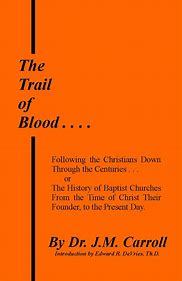 Trail of Blood BookletAbout Steve Ray
Trail of Blood BookletAbout Steve RayStephen K. Ray was raised in a devout and loving Baptist family. His father was a deacon and Bible teacher, and Stephen was very involved in the Baptist Church as a teacher of Biblical studies. After an in-depth study of the writings of the Church Fathers, both Steve and his wife Janet converted to the Catholic Church. He is the host of the popular, award-winning film series on salvation history, The Footprints of God. Steve is also the author of the best-selling books Crossing the Tiber, and St. John’s Gospel.
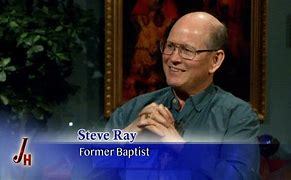 Interview About The Trail Of Blood
Interview About The Trail Of BloodThe post Trail Of Blood: Debunking A False Church History appeared first on William Hemsworth.
William Hemsworth's Blog
- William Hemsworth's profile
- 7 followers



